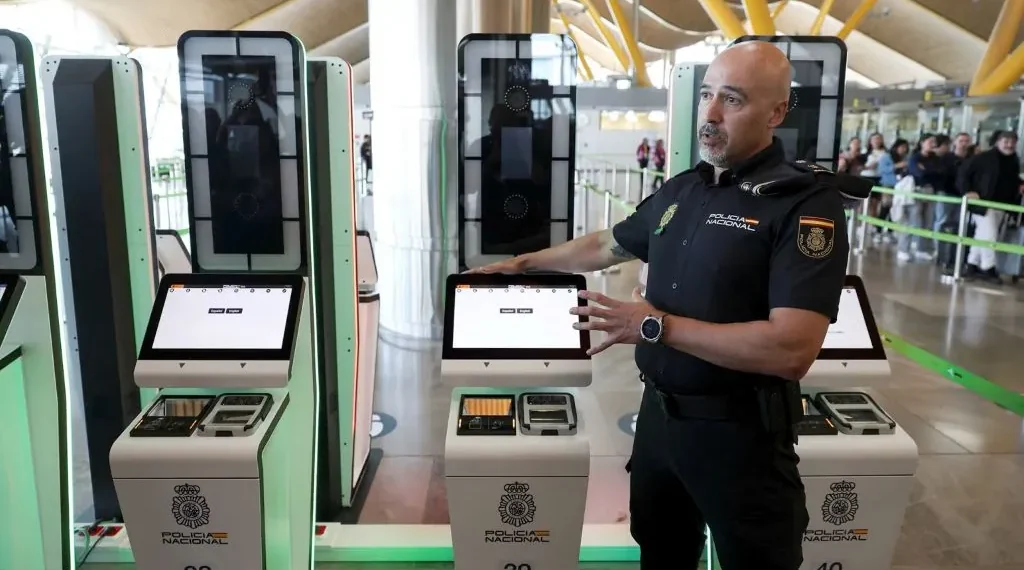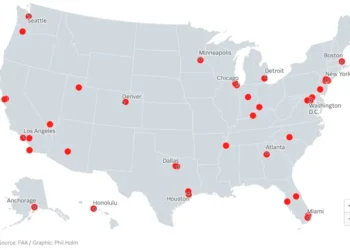European Union Rolls Out New Entry/Exit System for Travelers on October 12
Published: October 11, 2025, 22:05 EDT
After several years of planning and delays, the European Union’s long-awaited Entry/Exit System (EES) is set to go live on October 12. The new biometric border control system aims to streamline travel while strengthening security and tracking for non-EU visitors across the Schengen Area.
What Is the EU Entry/Exit System?
The Entry/Exit System, or EES, is a new digital database designed to record and monitor the movement of non-EU citizens entering and leaving the Schengen Area — a zone comprising 29 European countries.
The system replaces the traditional passport stamp method by collecting travelers’ biometric data, including fingerprints and facial images, at the border. This process mirrors existing systems in countries such as the United States, which already use biometric verification to enhance border security.
According to the European Commission, EES serves two primary goals: preventing overstays beyond the allowed 90 days in any 180-day period, and reducing illegal border crossings across the region.
How Will It Work?
When entering the Schengen Zone for the first time under EES, travelers will need to register at a self-service kiosk or manned border control. The system will capture facial images, fingerprints, and passport details to create a digital record.
Once registered, future trips will be faster — travelers’ data will simply be matched with existing records, allowing for automated entry through e-gates where available.
Border control points across Europe have already begun installing these registration kiosks. The European Commission says the process will become quicker after a traveler’s initial visit.
Gradual Rollout Across Member States
To prevent congestion at airports and land borders, the EU is introducing the system in phases. Each country can choose its own pace, provided it meets EU-mandated milestones:
30 days after launch: 10% of travelers must be registered.
90 days after launch: 35% registered.
150 days after launch: 50% registered.
By April 9, 2026: 100% of travelers entering or exiting must be registered in the system.
At least one border crossing in every Schengen member state must be operational by October 12, with full coverage planned by spring 2026.
What Data Will Be Collected?
The EES will collect:
Fingerprints and facial images
Passport details (name, date of birth, document number)
Entry and exit dates and border points
Accommodation details and proof of sufficient travel funds
If a traveler is denied entry, that decision will also be recorded in the system and visible during future travel attempts.
Data will be stored for three years, after which it will automatically expire unless renewed by a new visit.
Potential Delays at Borders
EU officials caution that minor delays may occur during the initial rollout as travelers register their biometric information for the first time.
To reduce waiting times, most airports, seaports, and land crossings are equipped with self-service kiosks for faster processing. Once travelers are registered, subsequent crossings should be significantly quicker.
End of Passport Stamps — But Not Yet
Although EES will eventually replace traditional passport stamps, the EU confirmed that stamps will continue to be used temporarily during the six-month transition period.
This dual system ensures that countries still onboarding EES technology can accurately track visitors’ stays until the full rollout is completed in April 2026.
What Happens if You’re Refused Entry?
If a traveler is denied entry, that record will remain in the EES database and be visible to border authorities during any future attempts to enter the Schengen Area.
Officials emphasize that all data handling complies with strict EU data protection and privacy laws under the General Data Protection Regulation (GDPR).
Will You Need to Register Every Time You Travel?
No. Once your biometric information is stored, it remains valid for three years. Each new visit within that period will automatically renew your registration.
If you don’t travel again within three years, your data will expire and need to be re-entered during your next visit.
Travelers who obtain a new passport do not need to re-register, as their existing biometric data will be linked to the updated passport information.
Who Needs to Register Under EES?
Only non-EU citizens — including tourists, business travelers, and family visitors — are required to register. EU citizens and legal residents already have their biometric information stored through other systems.
Children under 12 are exempt from fingerprinting but must complete the rest of the registration process.
What About British Travelers?
Since the United Kingdom’s departure from the EU, British citizens are considered “third-country nationals.”
This means that all UK visitors, except those who are EU residents or covered by the Brexit Withdrawal Agreement, must register under the EES before entering or leaving the Schengen Area.
ETIAS Is Next
The EES is the first of two major border security initiatives. The European Travel Information and Authorization System (ETIAS) — a pre-travel visa waiver similar to the U.S. ESTA — is scheduled to launch in late 2026, according to EU officials.
An information campaign will begin about six months before ETIAS becomes mandatory.
Conclusion
The launch of the EU’s Entry/Exit System marks a major milestone in the bloc’s border modernization. While it may cause brief delays during its early phase, officials say the system will ultimately make European travel safer, faster, and more efficient for millions of visitors each year.
This article was rewritten by JournosNews.com based on verified reporting from trusted sources. The content has been independently reviewed, fact-checked, and edited for accuracy, neutrality, tone, and global readability in accordance with Google News and AdSense standards.
All opinions, quotes, or statements from contributors, experts, or sourced organizations do not necessarily reflect the views of JournosNews.com. JournosNews.com maintains full editorial independence from any external funders, sponsors, or organizations.
Stay informed with JournosNews.com — your trusted source for verified global reporting and in-depth analysis. Follow us on Google News, BlueSky, and X for real-time updates.














